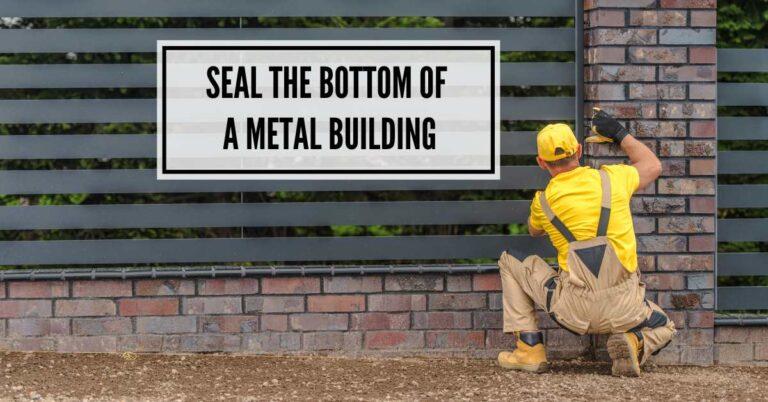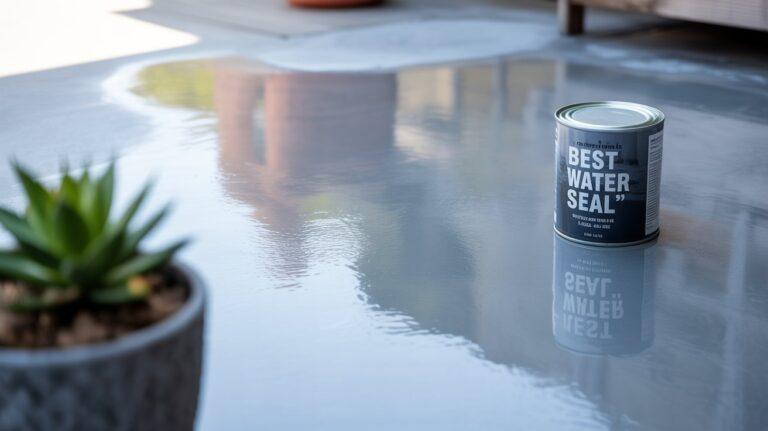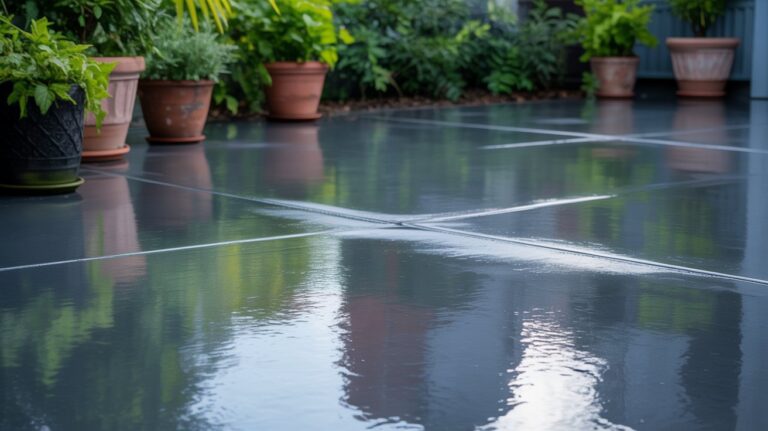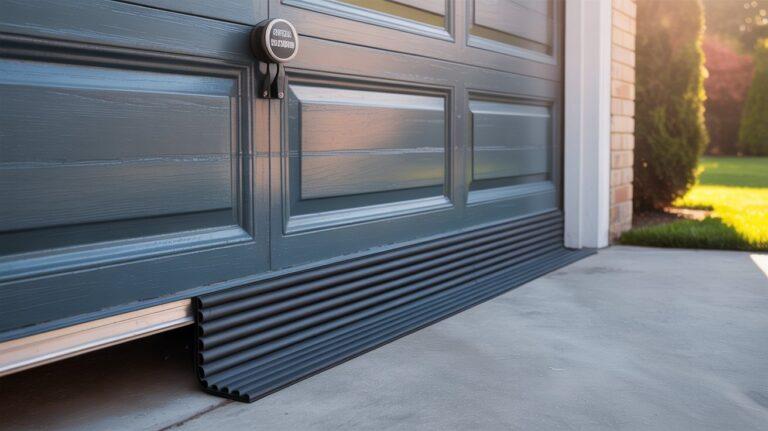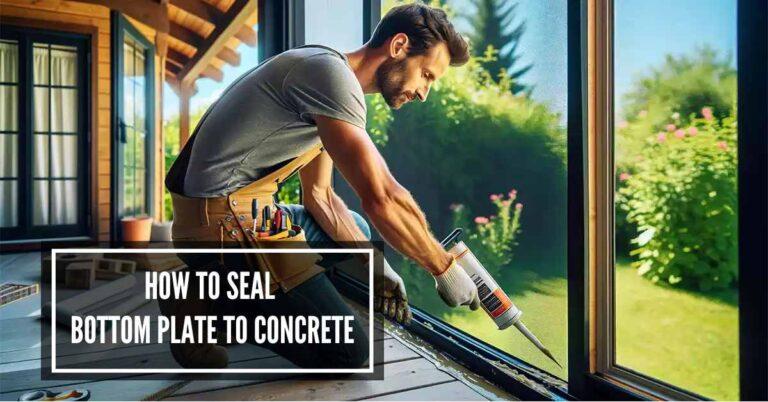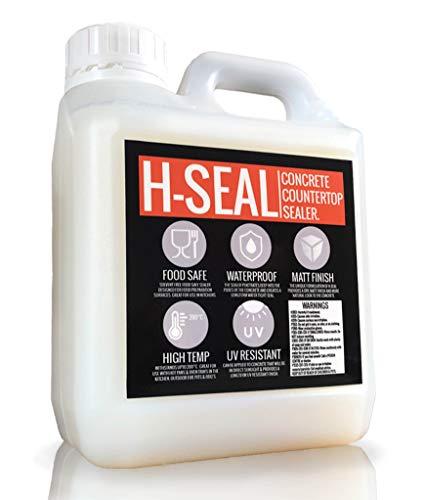How to Seal Stamped Colored Concrete: Best Tips & Tricks
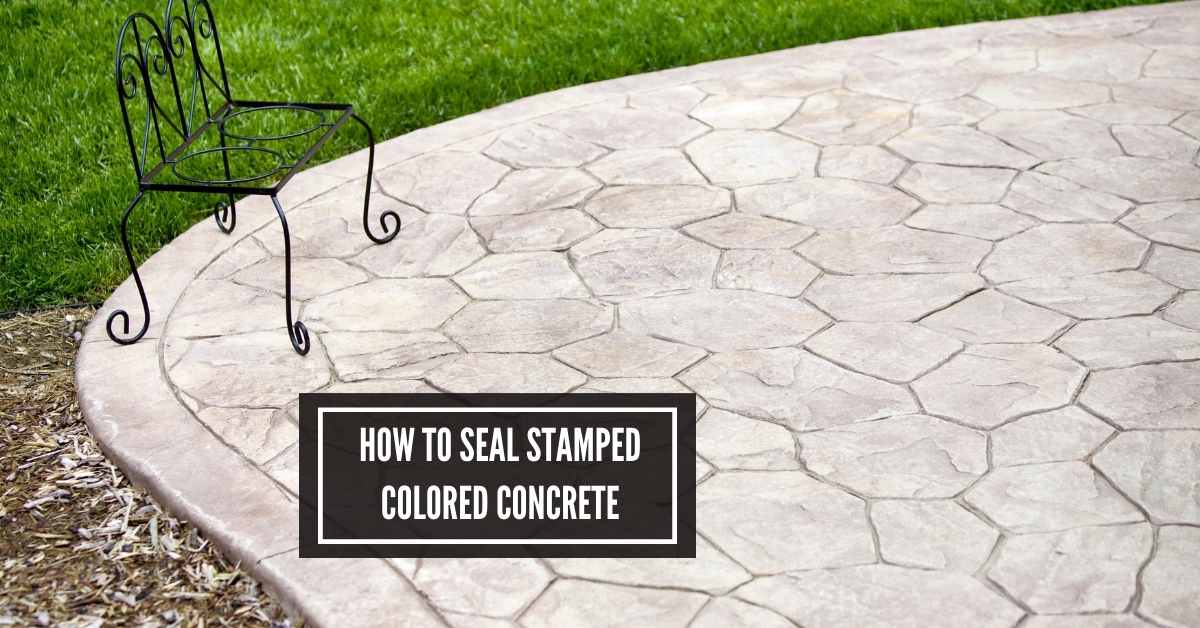
To seal stamped colored concrete, apply a high-quality sealer and follow the manufacturer’s instructions. Ensure the concrete is clean and dry before application.
Stamped colored concrete is a versatile and durable material used in various outdoor settings, capable of mimicking textures and colors of natural stone or brick. Despite its resilience, it requires proper sealing to protect against weathering, moisture, and traffic. Homeowners and contractors aim to maintain its vibrant color and texture through routine maintenance, including sealing.
This step enhances the longevity and appearance of any stamped concrete surface. The sealing process should be undertaken with care, utilizing the right products and techniques to lock in the beauty without compromising the surface’s integrity. It’s a straightforward task that, when done correctly, can drastically increase the lifespan of your stamped concrete investment.
Understanding Stamped Colored Concrete
Stamped colored concrete brings beauty to patios, driveways, and pathways. It resembles pricey materials like stone, wood, or tile at a lower cost. Sealing it protects and enhances this artistic flooring.
With stamped colored concrete, creative designs and colors turn plain surfaces into art. Rubber stamps imprint patterns before the concrete sets. A blend of colors is then added to create a unique look.
Importance Of Sealing Stamped Concrete
Sealing this concrete type is crucial. The sealer acts as a barrier. It guards against weather, spills, and stains. This helps maintain the concrete’s vibrant color and intricate patterns.
Benefits Of Properly Sealed Surfaces
- Enhanced color and shine: Sealer brightens and adds gloss to concrete.
- Extended life: It increases surface durability, making it last longer.
- Easier cleaning: Smooth and sealed surfaces make cleaning simple.
Preparation For Sealing Stamped Concrete
Proper preparation is the key to ensuring your stamped colored concrete stays beautiful and durable. Before sealing, a few important steps help achieve the best outcomes. These steps guarantee that your concrete sealant adheres correctly and lasts many years.
Evaluating The Condition Of Your Stamped Concrete
First, inspect your stamped concrete. Look for any cracks, chips, or stains. Address them promptly. A well-maintained surface takes the sealant better, thus protecting the color and texture.
Cleaning The Surface: Step-by-step Guide
Cleanliness is crucial before sealing. Follow these steps:
- Sweep away debris.
- Wash with a mild detergent.
- Rinse thoroughly; no soap residue.
- Let dry completely.

Choosing The Right Day To Seal: Weather And Timing
Pick a dry, mild day. Avoid wet or hot days. The sealant needs time to bond without interference.
Gathering Necessary Materials And Tools
Prepare all items in advance:
- Concrete sealant – Choose quality for best protection.
- Roller or sprayer – Select the right applicator.
- Protective gear – Gloves, glasses, and mask.
- Cleanup supplies – Rags and cleaner for spills.
Choosing The Right Sealer For Your Project
When you seal your stamped colored concrete, protecting its beauty is crucial. A proper sealer ensures longevity, vibrant color, and reduced wear. Choose the correct sealer for your project with care.
Types Of Sealers For Stamped Colored Concrete
Stamped concrete’s appearance and protection are significantly influenced by the type of sealer applied. There are primarily two sealer types:
- Acrylic sealers – Good for enhancing color and providing a glossy finish.
- Polyurethane and epoxy sealers – They offer thicker, more durable protection.
Considerations For Sealer Selection: Appearance, Durability, And Maintenance
Make an informed decision by considering these points:
| Consideration | Details |
|---|---|
| Appearance | Choose gloss or matte; some sealers enhance color. |
| Durability | Epoxy or polyurethane sealers wear less over time. |
| Maintenance | Consider reapplication frequency and ease of cleaning. |
Application Differences Between Solvent-based And Water-based Sealers
Understand the key differences in application to make the best choice:
- Solvent-based sealers often offer a higher gloss finish and can revive color. They require careful handling due to stronger odor and VOC content.
- Water-based sealers are easier to apply and more environmentally friendly. They provide a natural appearance and are ideal for indoor use.
Product Spotlight: MasonryDefender Concrete Sealer
One product that consistently ranks as a top choice among professionals is the MasonryDefender Concrete Sealer. This water-based formula is specifically designed for stamped colored concrete, offering superior protection without compromising the concrete’s natural texture.
Key Features
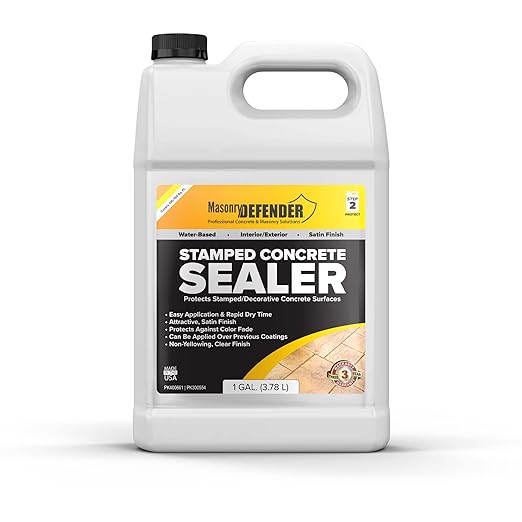
a) Enhanced Color
SealMaxxPlus enhances the vibrant hues of your stamped concrete, making colors pop and providing a wet look that many homeowners desire.
b) Eco-Friendly
As a water-based sealer, it’s environmentally friendly and safe for use around plants and animals.
c) Easy Application
Its formulation allows for easy application with a sprayer, roller, or brush, making it a convenient option for DIY enthusiasts and professionals alike.
d) UV Protection
It offers excellent resistance to UV rays, preventing color fading and maintaining the integrity of the concrete surface.
Application Techniques And Tips
Proper sealer application keeps colored concrete looking vibrant and new. Master these techniques and tips for a flawless finish every time.
Applying The Sealer: Techniques For Even Coverage
To achieve an even finish, follow these steps:
- Pour the sealer into a pump sprayer or a roller tray.
- Start in a corner and work your way out to avoid stepping on the wet sealer.
- Use a roller or sprayer to apply the sealer in a thin, even coat.
- Overlap each pass by a few inches to prevent missed spots.
- Keep a wet edge to avoid lines and marks.
Common Mistakes When Applying Sealer And How To Avoid Them
Be mindful of these potential pitfalls:
- Applying too much sealer can lead to a cloudy or slippery surface. Apply thin layers.
- Not mixing the sealer properly before application affects consistency. Stir well.
- Ignoring weather conditions can ruin the seal. Apply in dry weather, away from extreme temperatures.
- Letting the sealer puddle results in uneven spots. Keep the roller moving.
Drying Time And Re-coating: Best Practices
To ensure proper curing, follow these guidelines:
- Wait for the first coat to dry thoroughly before applying a second. This typically takes 24 hours.
- Test the surface with your foot. If it’s tacky, wait longer.
- Apply subsequent coats thinner than the first for quicker drying times.
- Check the weather forecast. No rain should be expected for at least 24 hours after application.
Maintenance And Troubleshooting
Maintenance and Troubleshooting are key to preserving the beauty and durability of stamped, colored concrete. Proper upkeep safeguards the surface. It defends against wear and tear. Occasional issues can arise. Knowing how to tackle these ensures your concrete stays pristine for years.
Maintaining Your Sealed Stamped Concrete For Longevity
- Regular Cleaning: Sweep away debris weekly. Wash the surface gently with a hose every few months.
- Avoid Harsh Chemicals: Use pH-neutral cleaning solutions to prevent damage to the sealant.
- Apply a Fresh Coat: Sealant layers break down over time. Reapply every 2-3 years for best protection.
Dealing With Stains And Discoloration Post-sealing
- Identify the Stain: Is it oil, grease, or something else? Each type may require a different approach.
- Gentle Cleaning Solutions: Opt for mild detergents or poultices for tough stains. Avoid abrasive scrubbing.
- Spot Treatment: Apply stain removers directly to the affected area, following manufacturer instructions.
When To Reseal: Recognizing The Signs
Be proactive. Look for:
| Sign | Action Needed |
|---|---|
| Fading: | Clean and reapply sealant. |
| Cracking: | Fill cracks, then reseal surface. |
| Peeling: | Remove loose sealant, reseal area. |
A visual inspection each season helps catch issues early. Touch up as needed. Prevents extensive damage and costly repairs.

Best Practices Recap
Embarking on the journey to seal your stamped colored concrete is essential. It protects and enhances your outdoor space. Ensuring the process is done correctly pays off in durability and curb appeal. Let’s recap the vital steps and top tips for maintaining your stamped concrete’s beauty and longevity.
Summarizing The Key Steps For Successful Sealing
- Clean the surface thoroughly to remove any debris or dirt.
- Wait for a dry weather window to ensure proper sealant application and drying.
- Choose the right sealant for stamped colored concrete.
- Apply the sealant evenly with a sprayer or roller to prevent puddles.
- Allow ample time for the sealant to cure before using the area.
Top Tips For Ensuring Lasting Beauty And Protection Of Your Stamped Concrete
- Reapply sealant every 2-3 years or as necessary.
- Use a non-slip additive in areas prone to wetness for safety.
- Protect the area from furniture scratches with felt pads or coasters.
- Avoid harsh chemicals; opt for gentle cleaners to maintain the surface.
- Regularly sweep and rinse the concrete to prevent buildup.
Additional Resources And Professional Advice
For more in-depth guidance, seeking professional advice is always wise. Experienced contractors can provide tailored solutions. Several online resources can offer further insights into sealing stamped colored concrete. Always consult the sealant manufacturer’s instructions for best results.
Frequently Asked Questions
What Is The Best Sealer For Colored Concrete?
The best sealer for colored concrete is a solvent-based acrylic sealer, as it enhances color, provides durable protection, and offers a high-gloss finish.
Can You Seal Colored Concrete?
Yes, you can seal colored concrete to enhance and protect its color and surface. Use a high-quality concrete sealer designed for colored surfaces for best results.
Is It Better To Roll Or Spray Stamped Concrete Sealer?
Rolling stamped concrete sealer typically provides a more even application than spraying, minimizing the risk of over-application and ensuring better control of the sealer thickness.
How Do You Seal Concrete Without Changing Color?
To seal concrete without altering its appearance, choose a penetrating sealer. These sealers provide protection without the glossy finish, maintaining the concrete’s natural look. Always test in a small area before full application.
What Is Stamped Concrete Sealing?
Stamped concrete sealing involves applying a protective layer over colored concrete patterns to enhance durability and maintain aesthetics.
Conclusion
Sealing stamped colored concrete is essential for its longevity and vibrancy. By following the steps outlined, you ensure protection against weather and wear. Regular maintenance keeps its aesthetic appeal for years. Remember, a well-preserved surface saves time and money in the long run.
Seal the deal on your concrete, and enjoy the lasting results.

I am Robert Sandin, a professional sealing expert with a diverse range of expertise. From concrete to various other materials, I possess in-depth knowledge and experience in the art of sealing. On my website, I offer valuable tips and expert recommendations on sealing techniques and products for different materials. Whether it’s concrete, wood, metal, or more, I am committed to providing you with the guidance you need for successful sealing projects.

